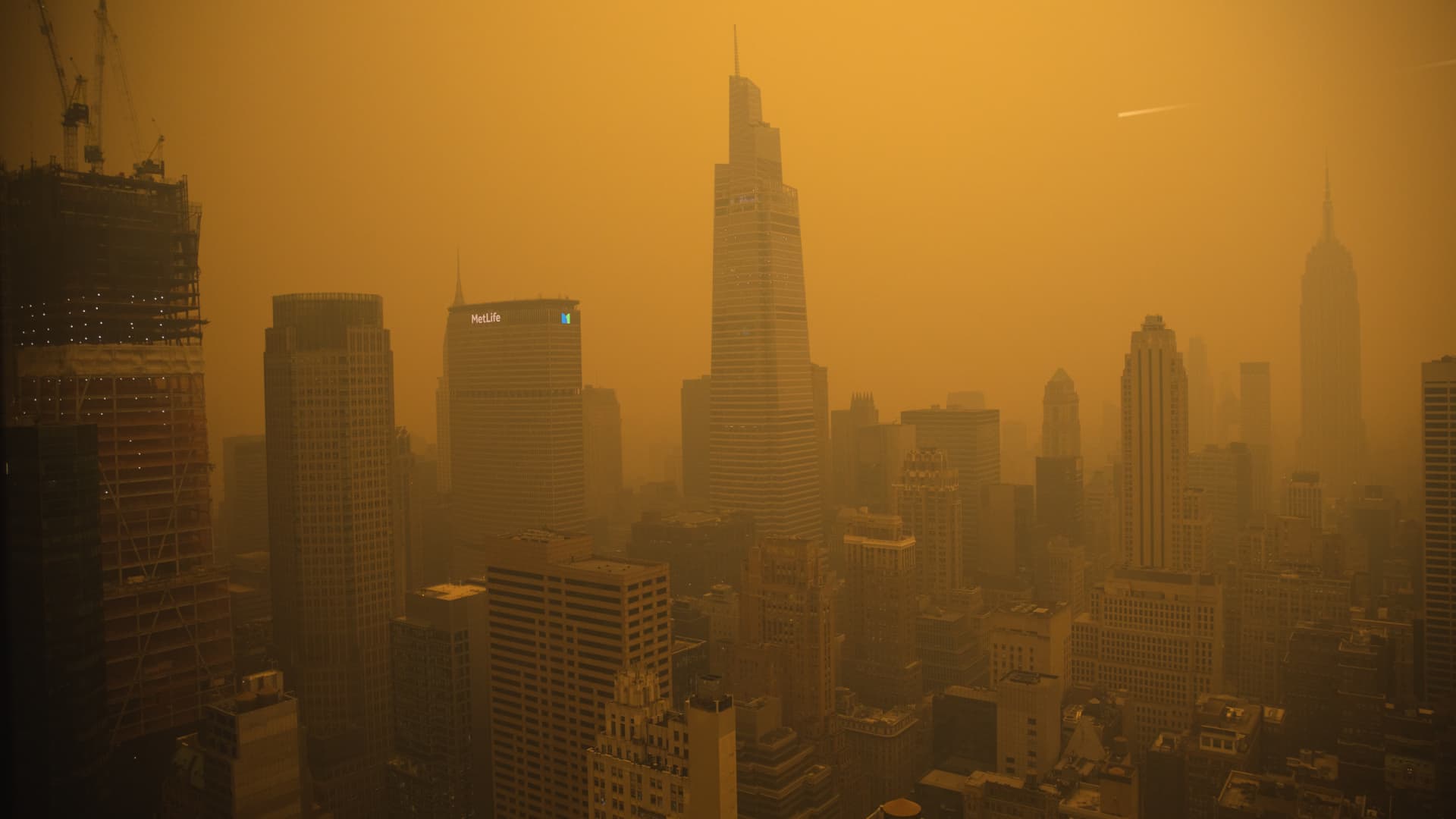
Is New York City's air quality safe? New York City, known for its iconic skyline and bustling streets, faces significant air quality challenges. With millions of vehicles, numerous industrial activities, and a dense population, the air can sometimes be less than ideal. Air quality in NYC fluctuates due to various factors like weather, traffic, and seasonal changes. While efforts have been made to improve it, concerns remain. Understanding the current state of NYC's air quality helps residents and visitors make informed decisions about their health and activities. Let's dive into 25 facts that shed light on the air you breathe in the Big Apple.
Air Quality in NYC: A Closer Look
New York City, known for its towering skyscrapers and bustling streets, also faces significant air quality challenges. Understanding these issues can help us appreciate the efforts needed to improve the air we breathe.
-
NYC's Air Quality Index (AQI): The AQI measures air pollution levels. NYC often experiences moderate AQI levels, meaning air quality is acceptable but may pose a risk for some people.
-
Common Pollutants: Major pollutants include particulate matter (PM2.5 and PM10), nitrogen dioxide (NO2), sulfur dioxide (SO2), carbon monoxide (CO), and ozone (O3).
-
PM2.5 Levels: Fine particulate matter (PM2.5) is particularly harmful as it can penetrate deep into the lungs. NYC's PM2.5 levels often exceed WHO guidelines.
-
Traffic Emissions: Vehicle emissions are a significant source of air pollution in NYC. Traffic congestion contributes to higher levels of NO2 and PM2.5.
-
Industrial Emissions: Factories and power plants also contribute to air pollution. They release pollutants like SO2 and CO, affecting air quality.
Health Impacts of Poor Air Quality
Air pollution doesn't just affect the environment; it has serious health implications for NYC residents.
-
Respiratory Issues: Exposure to high levels of pollutants can cause or worsen respiratory conditions like asthma and bronchitis.
-
Cardiovascular Diseases: Long-term exposure to air pollution increases the risk of heart diseases and strokes.
-
Children's Health: Children are more vulnerable to air pollution. It can affect their lung development and increase the risk of respiratory infections.
-
Elderly Population: Older adults are also at higher risk. Poor air quality can exacerbate existing health conditions and lead to premature death.
-
Mental Health: Recent studies suggest a link between air pollution and mental health issues, including anxiety and depression.
Efforts to Improve Air Quality
Various initiatives are underway to tackle air pollution in NYC, aiming to create a healthier environment for all.
-
Clean Air Act: This federal law regulates air emissions from stationary and mobile sources, helping to reduce pollution levels.
-
PlaNYC: NYC's sustainability plan includes measures to improve air quality, such as promoting public transportation and green buildings.
-
Congestion Pricing: Implementing congestion pricing aims to reduce traffic in Manhattan, thereby lowering vehicle emissions.
-
Green Roofs: Installing green roofs on buildings helps absorb pollutants and reduce the urban heat island effect.
-
Electric Vehicles: Encouraging the use of electric vehicles (EVs) reduces emissions from traditional gasoline-powered cars.
Seasonal Variations in Air Quality
Air quality in NYC can vary significantly with the seasons, influenced by weather patterns and human activities.
-
Winter Pollution: During winter, heating systems and increased vehicle use can lead to higher pollution levels.
-
Summer Smog: Hot summer days can cause ground-level ozone to form, leading to smog and poor air quality.
-
Spring Allergens: Spring brings pollen, which can combine with pollutants to worsen air quality and trigger allergies.
-
Fall Improvements: Fall often sees better air quality due to milder weather and reduced heating and cooling demands.
Community Involvement and Awareness
Community efforts and public awareness play a crucial role in addressing air quality issues in NYC.
-
Public Awareness Campaigns: Educating the public about air pollution and its effects encourages people to take action.
-
Community Monitoring: Local groups often set up air quality monitors to track pollution levels and advocate for cleaner air.
-
School Programs: Schools teach students about air quality, encouraging the next generation to be mindful of environmental issues.
-
Citizen Science: Residents participate in citizen science projects, collecting data on air quality to support research and policy changes.
-
Advocacy Groups: Organizations like the New York City Environmental Justice Alliance work to address air quality issues and promote environmental justice.
-
Personal Actions: Individuals can help improve air quality by using public transportation, reducing energy consumption, and supporting clean energy initiatives.
Breathing Easier in NYC
Air quality in NYC has seen significant improvements over the years, but challenges remain. Understanding the factors that affect air quality helps residents make informed decisions about their health. From vehicle emissions to industrial pollutants, various sources contribute to the city's air quality. Efforts like green spaces, stricter regulations, and public awareness campaigns play a crucial role in maintaining cleaner air.
Residents can also take steps to protect themselves, such as using air purifiers, avoiding outdoor activities during high pollution days, and supporting policies that aim for cleaner air. Staying informed about current air quality levels through apps and websites can also help.
By working together, NYC can continue to improve its air quality, ensuring a healthier environment for everyone. Cleaner air means better health, longer lives, and a more vibrant city. Let's all do our part to breathe easier in the Big Apple.
Was this page helpful?
Our commitment to delivering trustworthy and engaging content is at the heart of what we do. Each fact on our site is contributed by real users like you, bringing a wealth of diverse insights and information. To ensure the highest standards of accuracy and reliability, our dedicated editors meticulously review each submission. This process guarantees that the facts we share are not only fascinating but also credible. Trust in our commitment to quality and authenticity as you explore and learn with us.
